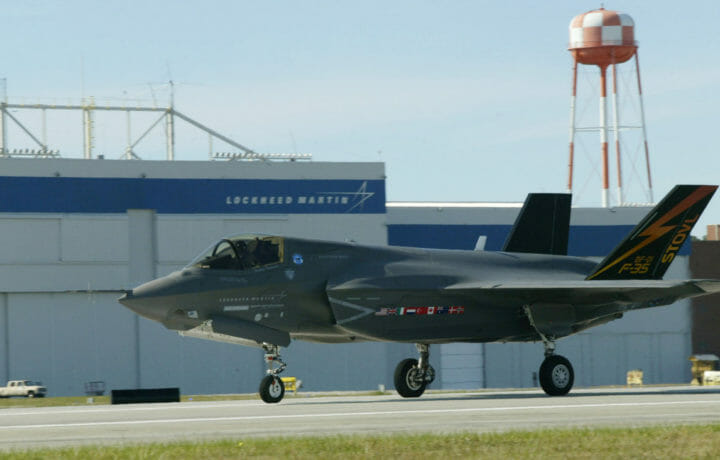The United States military’s fifth-generation stealth fighter will be integrated with the legacy HARM missile platform instead of the upgraded AARGM platform. The Naval Air Systems Command (NAVAIR) awarded a $97.3 million contract to aerospace giant Lockheed Martin to integrate the AGM-88 HARM (High Speed Anti-Radiation Missile) on the F-35A/B/C aircraft, to include procuring associated incidental hardware for the United States Air Force, Navy, Marine Corps, Foreign Military Sales (FMS) customers, and non-Department of Defense (DoD) participants.
The contract modification further called for Lot 17 U.S. Reprograming Lab development; Lot 17 Australia, Canada, and United Kingdom Reprogramming Lab development; Lot 17 Norway and Italy Reprogramming Lab development; and Lot 17 mission data files updates for the governments of Denmark, the Netherlands and FMS customers.
“Lot 17” is the company’s designation given to the latest tranche of the Lightning II aircraft being produced. The United States DoD finalized the deal for production of the lot in December 2022, and it includes 126 aircraft that will be the first iteration to include the Technical Refresh-3 (TR-3) upgrade, and the modernized hardware that needed to power Block 4 capabilities. The TR-3 features a new integrated core processor with greater computing power, a panoramic cockpit display and an enhanced memory unit.
The majority of the work on the aircraft will be performed in Fort Worth, Texas – with additional work being carried out in Nashua, New Hampshire; Baltimore, Maryland; Orlando, Florida; Torrance, California; San Diego, California; El Segundo, California; Northridge, California; Clearwater, Florida; Buffalo, New York; and Tucson, Arizona. It is expected to be completed in March 2026.
A Legacy System
The fifth-generation aircraft is receiving the legacy system that first entered service in the 1980s. Currently integrated on the F-16C Fighting Falcon, the AGM-88 HARM is a tactical, air-to-surface anti-radiation missile designed to home in on electronic transmissions coming from surface-to-air radar systems. The air-launched missile be employed to detect, attack and destroy a radar antenna or transmitter with minimal aircrew input, as a proportional guidance system that homes in on enemy radar emissions has a fixed antenna and seeker head in the missile’s nose.
The HARM was originally developed by Texas Instruments as a replacement for the AGM-45 Shrike and AGM-78 Standard ARM system. However, production was later taken over by Raytheon Corporation when it acquired the defense production business of Texas Instruments.
The upgraded variant – the AARGM – is already employed on the F-35A/B/C, as well as the F/A-18C/D/E/F Super Hornet its variant, the E/A-18G Growler aircraft. As Naval Technology reported, the United States DoD only ordered the production 118 AARGM extended range missiles last November, and speculated that current U.S. weapons inventory lacks the upgraded variant – and therefore is left to integrate it legacy missiles.
Lockheed Martin Hits an F-35 Milestone
The F-35 also reached a significant milestone, as the aerospace firm recently completed production on the 1,000 F-35 Lightning II.
“We continue to produce F-35s at rate and have jets in various stages of the final production process. Once these jets receive the necessary TR-3 hardware and final TR-3 software is available, they will continue through the production process, including parking, until they are delivered,” Lockheed Martin told Tyler Rogoway of The Warzone last week via email.
To date, F-35s have accumulated more than 773,000 flight hours spread out across 469,000 total sorties, while the stealth fighter is now operated or will be adopted by more than a dozen allied and partner nations around the world. Apart from older fourth generation aircraft, including the F-15 Eagle and the Sukhoi Su-27 (NATO reporting name “Flanker”), few modern combat aircraft have reached a “four-figure” production run.




